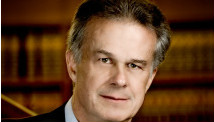Bill Gates discusses class work with students at South High School in Denver, Colorado last year.
STORY HIGHLIGHTS
- Bill Gates says his foundation is focused on setting goals, measuring progress
- To improve education, we need measures of teacher effectiveness, he says
- Gates: It's worth spending what it takes for strong evaluation system
- He says better measuring will empower teachers to do their best work
Editor's note: Bill Gates is co-chair of the Bill & Melinda Gates Foundation. Watch an interview with him Sunday on "Fareed Zakaria GPS" at 10 a.m. and 1 p.m. ET.
(CNN) -- Today I released my annual letter. Each year, I reflect on what I learned in the last year through our travels and work with the foundation and how that will shape my thinking over the coming months. This year, my letter focuses on how important it is to set clear goals and measure progress in order to accomplish the foundation's priorities, both here at home and around the world.
Setting a clear goal lets you know what you're driving at: Picking the right interventions that will have the most impact on that final goal, using that information to understand what's working and what's not, and adapting your strategy as necessary. One of the clearest examples of the power of measurement was the work of our partners to support great teachers.
In the past few years, the quest to understand great teaching has been at the center of the public discussion about how to improve education in America. But for the country's 3 million teachers and 50 million schoolchildren, great teaching isn't an abstract policy issue. For teachers, understanding great teaching means the opportunity to receive feedback on the skills and techniques that can help them excel in their careers. For students, it means a better chance of graduating from high school ready for success in life.
But what do we mean when we talk about great teaching? In my experience, the vast majority of teachers get zero feedback on how to improve.
That's because for decades, our schools have lacked the kinds of measurement tools that can drive meaningful change. Teachers have worked in isolation and been asked to improve with little or no feedback, while schools have struggled to create systems to provide feedback that's consistent, fair and reliable.
That's why the Gates Foundation supported the Measures of Effective Teaching, or MET, project. The project was an extraordinary, three-year collaboration between dozens of researchers and nearly 3,000 teacher volunteers from seven U.S. public school districts who opened their classrooms so we could study how to improve the way we measure and give feedback about great teaching.
Earlier this month, the MET project released its final findings. The report confirmed that it is possible to develop reliable measures that identify great teaching.
The project also found that using multiple measures to understand a teacher's performance -- including classroom observations, student surveys and growth in student achievement -- provides a richer and more reliable picture of a teacher's strengths and areas for improvement than any one measure alone.
Some critics say a strong evaluation system costs too much. The foundation and others have estimated that it could cost between 1.5% and 2% of the overall budget for teacher compensation and benefits to implement a feedback and evaluation system based on multiple measures of teaching performance.
But such an investment in great teaching would be small compared to what is being spent now on professional development that too often shows little results. And if lessons learned from addressing equally complex challenges in other sectors are any guide, investing in a reliable system to measure and support effective teaching will pay rich dividends.
Knowing how to identify and measure great teaching is a huge step toward providing better feedback and support for teachers and building a better education system for all our children -- but it's just one step. The challenge now is to use this information to give teachers the tools, resources and support they need to do their best work.
As schools become better equipped to provide tailored, constructive support, teachers will become empowered to be students of their own teaching. Creating that kind of environment -- one that supports teachers' professional growth and better prepares students for life after high school -- is worth the investment.
Follow @CNNOpinion on Twitter.
Join us at Facebook/CNNOpinion.
The opinions expressed in this commentary are solely those of Bill Gates.

